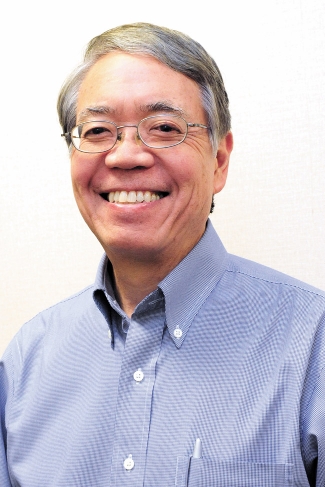A One-stop Colon Health Center
Dr. Howard Minami
Gastroenterologist at Endoscopy Institute of Hawaii
Where did you receive your schooling and training?
I did my undergraduate work at Harvard and got my medical degree from UCLA. Then I did my internship and residency in internal medicine at the University of Chicago and my gastroenterology fellowship at Yale.
How long have you been in practice?
Thirty-one years. This month marks Endoscopy Institute of Hawaii’s first anniversary. Our medical team includes seven doctors besides myself: Dr. Racquel Bueno, Dr. Herbert Lim, Dr. George Lisehora, Dr. Cedric Lorenzo, Dr. Mark Mugiishi, Dr. Warren Ono and Dr. Ronald Wong.
Why is it important to have a colonoscopy?
The most important thing is to understand that colon cancer is very much a preventable disease. According to the American Cancer Society, it is the most common cancer in the United States and the second leading cause of cancer-related deaths – after lung cancer – in the United States. In the latest data, 50,000 cancer deaths occur each year.
How many colonoscopies does the institute perform in a year?
We have the capability of doing 10,000 colonoscopies a year.
When should people come in for a colonoscopy?
Most patients should come at the age of 50 and above. There are certain groups who need to come in earlier. Those patients who have a family history of colon cancer, as well as African Americans, should start having colonoscopy screening at the age of 45. If there are no precancerous lesions in your colon, then you can come in every 10 years.
Do precancerous lesions turn into polyps?
No, polyps are any type of growth within the colon. Only some of them are precancerous, what we call adenomatous polyps. Those are the ones we are concerned about. If you have one or two adenomatous polyps, and you’ve had them removed during the colonoscopy, then you’ll need to come back in five years. If you’ve had three or more small adenomatous polyps, or one or two large polyps or ones that are very histologically aggressive, then you’ll need to come back in three years.
What makes Endoscopy Institute of Hawaii different?
We do a traditional colonoscopy here, but what makes us different is we’re committed to colon screening. We’ve been doing colonoscopies for many years at various hospitals and other endoscopy centers, but there is a bottleneck. It’s very difficult to get an appointment with the gastroenterologist or a colorectal surgeon, or a general surgeon who does colonoscopy. You may have to wait two or three months before you get the initial consultative visit. Here we have Robert Canfield, a board-certified nurse practitioner, who will evaluate the patient and set them up with a colonoscopy in a week or two.
You don’t even need to see your primary care physician to be referred. You can just pick up the phone and arrange for an appointment. The staff here will evaluate your insurance to be sure a colonoscopy is covered before the procedure is arranged. The person who does the colonoscopy is a board-certified gastroenterologist, colorectal surgeon or general surgeon.
Do you look at both the upper and lower digestive tracts?
We do upper endoscopies, what is called an esophagogastroduodenosocopy, as well as colonoscopy. We’ll do an upper endoscopy if you have any problem that is referable to the upper GI (gastrointestinal) tract. That would be any difficulty swallowing, problems with stomach pain or heartburn, or if you have questions of a malignancy.
What happens during the actual procedure?
Patients need to have someone drop them off because they will be sedated, so they can’t drive themselves home. Some patients require anesthesia administered by an anesthesiologist and that is administered intravenously. Most patients require a narcotic, fentanyl, and a sedative, Versed. With a combination of those two, they are very relaxed. Most patients fall asleep. The procedure takes about half an hour. If we see any polyps, which are those abnormal growths in the colon, we’re going to remove them right there and then. After that, they’ll come to the recovery room and their family member or significant other will come pick them up. By the next day, they can go back to work.
What are you looking for during the colonscopy?
It is a colon cancer screening, so we’re looking for colon cancer, as well as precancerous lesions. If it is a relatively small lesion, we can remove the lesion. If it is a larger lesion that will require surgery, we’ll biopsy the lesion and make the diagnosis as well as mark that area. We tattoo the area so the surgeon can later, at the time of surgery, identify exactly where the lesion is. This institute is a consortium of gastroenterologists and surgeons, so we can very easily refer the patient on for a more complete evaluation and therapy.
Anything else you’d like to add?
We are committed to the screening process and giving the patient a thorough examination. All colonoscopies and endoscopies are not the same. Just because you’ve had a colonoscopy doesn’t mean that you’ll never have colon cancer. Even at the best of hands, there is a miss rate of 2 to 6 percent with significant lesions. The colon is not a smooth cylinder – it has a lot of folds. There are deep folds that can hide lesions. Although we have the newest model scopes that give us a really good field of view, a 180-to 190-degree field of view, things can be hiding behind the folds.
It takes someone who is really committed to doing a really good examination to fully examine the colon. Some endoscopists around town are very interested just in the volume of procedures and not the quality. All of the endoscopists here are committed to doing a thorough examination.






